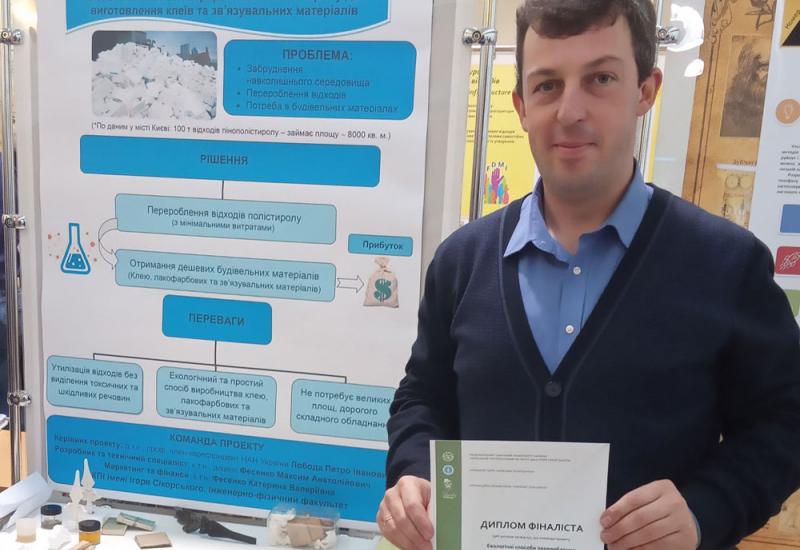Nowadays we got used to the polystyrene products such as thermal insulation materials as well as sound insulation materials, disposable thermal utensils, all kinds of packaging, etc. This material cannot be disposed of via garbage: it does not decompose for 80 years (even over a wide temperature range), easily tolerating the effects of ultraviolet, water, air and other natural factors. Meanwhile, it may react with other substances in which toxic substances run into the soil and atmosphere. Therefore, foam plastic dumps are damaging the environment and human health. It is also impossible to burn foam plastic. During its combustion, hydrocyanic acid, carbon monoxide, soot, phosgene, etc. are released into the atmosphere. As a result of recycling from solid foam waste, furniture parts, heaters, new foam blocks and glue are made.
Maxym Fesenko, the associate professor of the department of foundry production of ferrous and nonferrous metals, dedicated his eco-methods to the processing of polystyrene for the production of adhesives and binder materials. His project is the finalist of the Sikorsky Challenge Innovative Projects Contest.
Maxym told a KPI’s correspondent: "The project is aimed at the utilization and recycling of expanded polystyrene (foam). After dissolving the expanded polystyrene (foam) in specially designed reagents, we obtain adhesives, binders and paints. Adhesives and varnishes are intended for wood, plaster, cement, concrete, expanded polystyrene, plastics, metal, leather, etc. Binders can be used in the manufacture of foundry molds, bricks, ceramic, clay, cement, gypsum products in (for example, the production of paving slabs) ".
The difference from the proposed method from the existing is the use of non-toxic solvents on a mercury basis (hydrocarbon). In essence, the dissolution method is quite simple, but has significant advantages: recycling products are not harmful to the environment and humans. The organization of processing methods does not require large production areas and the use of complex expensive equipment.
In addition, the proposed methods of recycling polystyrene foam (foam plastic) solve the environmental problem - waste disposal, improve environmental conditions, and reduce waste in landfills. "
Consumers of materials after recycling of foam (foam plastic) are housing and communal services organizations, construction companies, foundry companies, technology companies (3D printing), furniture industries and more.

